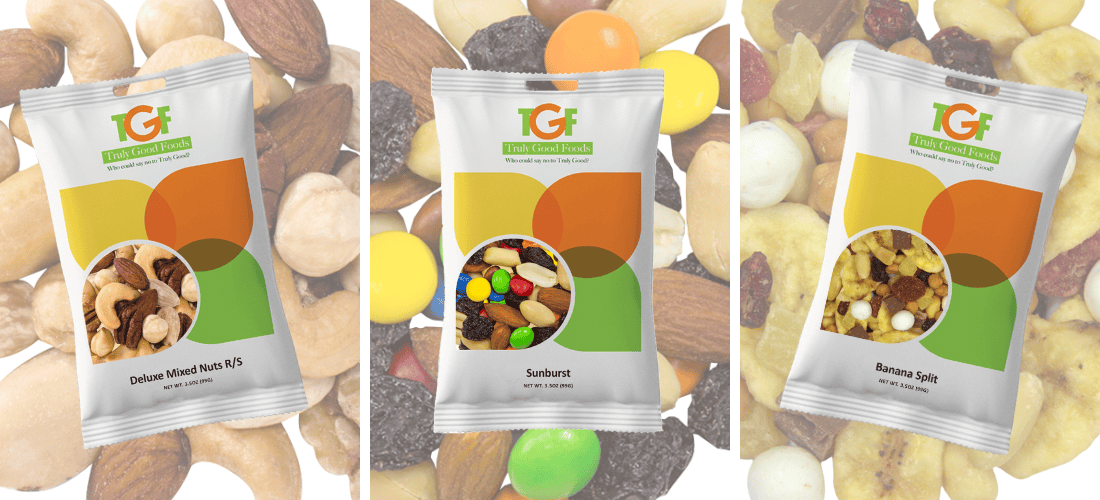Welcome to Truly Good Foods
Truly Good Foods has a passion for snacks and has specialized in quality snacking for more than 45 years. Women-owned and second generation family-operated, Truly Good Foods is headquartered in Charlotte, NC with five additional locations across the U.S. With more than 400 manufactured snacks, TGF believes in BETTER ingredients and MORE of those ingredients in every bite.

Henrietta Said™
Wing-Flavored Jumbo Peanuts
Learn more
Grabeez®
Resealable cups with 19 varieties of nuts, snack mixes and candy.
Learn more
trEAT4u
1oz snack bags that offer a healthier grab-and-go option.
Learn more
ReCharge®
Snacks with an Energy Boost!
Learn more
Snack Bags
Our snack bags and mini snack bags offer a wide variety of some of our best selling products.
Learn more
Why Knots?
Salty pretzels covered with sweet and tangy coating. Seven colorful flavors to choose from!
Learn more
View Online Catalog
Flip through to see all of our manufactured and distributed products
View Catalog
Women's History Month
As we celebrate Women’s History Month this March, we…
Read More
Search Products
Search by Ingredient, Dietary Profile, Best Selling by Industry and more
Start Searching